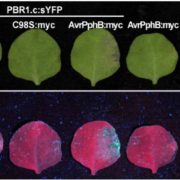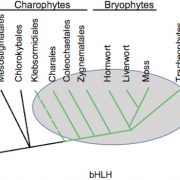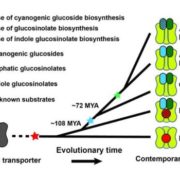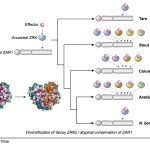Adaptive evolution of the enigmatic Takakia moss now facing climate change in Tibet
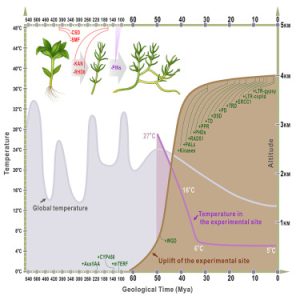 In this fantastic, engaging paper, Hu et al. carries the reader from the origins of life on land through the dramatic uplift of the Tibetan plateau and into the modern age of climate change, all through the lens of the “enigmatic” Takakia moss. It’s enigmatic because it has features that are more similar to liverworts, and in fact it’s now considered a sister clade to other mosses. Analysis of its biochemistry, cell biology, morphology, and genome reveal its early adaptations to life on land were followed by later adaptations including tolerance to severe UV radiation as it was thrust upwards when the Himalayans were formed by the India-Asian collision. These adaptations arose from fast-evolving genes involved in DNA repair and response to reactive oxygen damage, among others. But what makes this story so compelling is the most recent chapter. The authors discovered this species in 2005 and have since charted its steep decline in population in response to a very rapid increase in temperature (at the field site, the temperature rise over the past decade is the highest increase in recorded history). It seems that this tough little survivor may have met its match in anthropogenic climate change. (Summary by Mary Williams @PlantTeaching) Cell 10.1016/j.cell.2023.07.003
In this fantastic, engaging paper, Hu et al. carries the reader from the origins of life on land through the dramatic uplift of the Tibetan plateau and into the modern age of climate change, all through the lens of the “enigmatic” Takakia moss. It’s enigmatic because it has features that are more similar to liverworts, and in fact it’s now considered a sister clade to other mosses. Analysis of its biochemistry, cell biology, morphology, and genome reveal its early adaptations to life on land were followed by later adaptations including tolerance to severe UV radiation as it was thrust upwards when the Himalayans were formed by the India-Asian collision. These adaptations arose from fast-evolving genes involved in DNA repair and response to reactive oxygen damage, among others. But what makes this story so compelling is the most recent chapter. The authors discovered this species in 2005 and have since charted its steep decline in population in response to a very rapid increase in temperature (at the field site, the temperature rise over the past decade is the highest increase in recorded history). It seems that this tough little survivor may have met its match in anthropogenic climate change. (Summary by Mary Williams @PlantTeaching) Cell 10.1016/j.cell.2023.07.003



